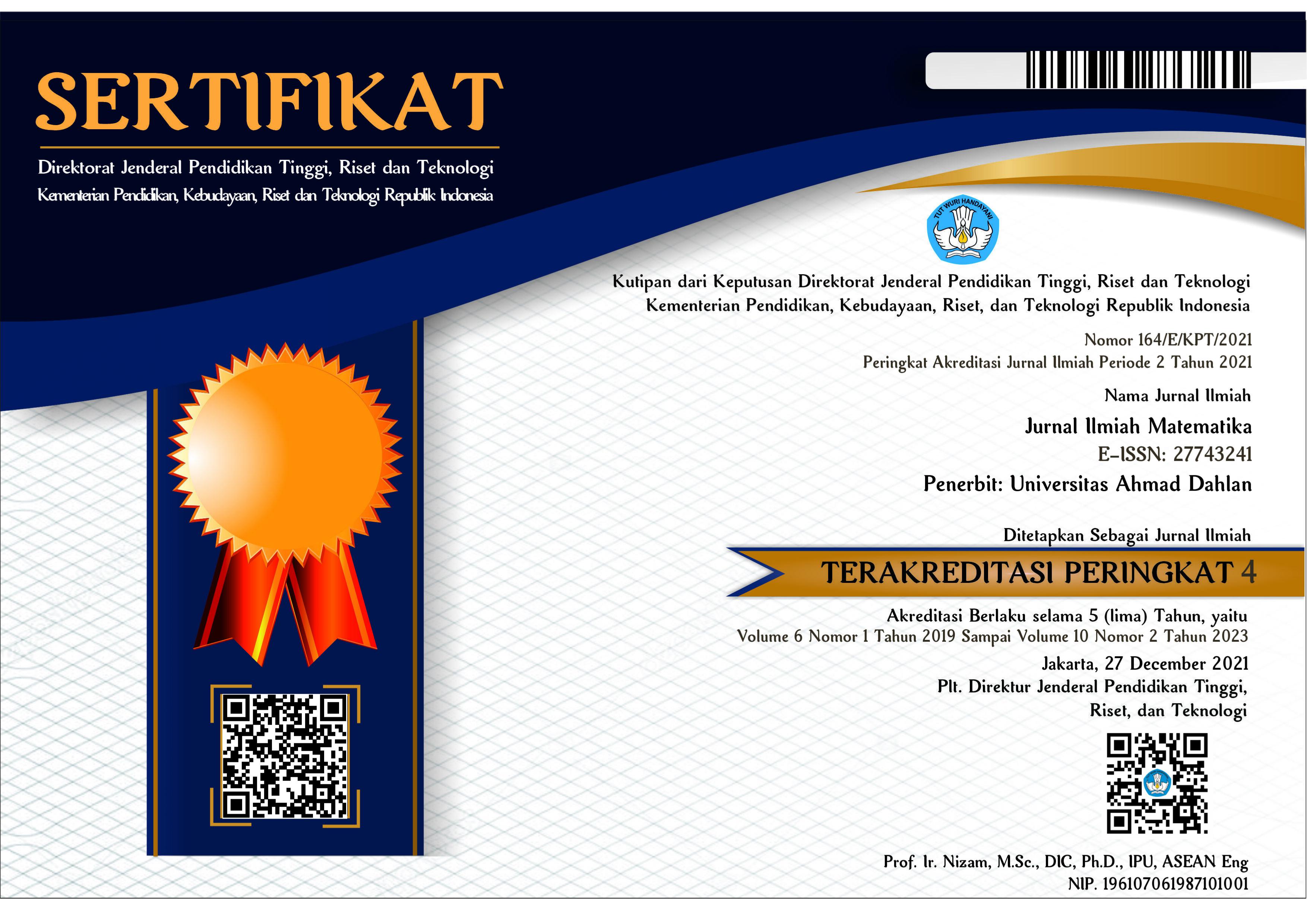Analisis perbandingan metode CST dan MCST terhadap curah hujan observasi saat banjir
DOI:
https://doi.org/10.26555/konvergensi.v8i1.21459Keywords:
CST, mCST, BanjirAbstract
Indonesia memiliki curah hujan yang tinggi sehingga berpotensi besar terhadap bencana hidrometeorologi. Salah satu metode yang dapat digunakan untuk estimasi curah hujan adalah CST dan mCST. Metode ini mampu untuk mengatasi keterbatasan pengamatan curah hujan di Indonesia. Pada tanggal 22 Februari 2020 di Jakarta Timur dan 28 Desember 2020 di Surabaya telah terjadi hujan ekstrem yang mengakibatkan banjir. Penelitian ini bertujuan untuk mengetahui perbandingan estimasi curah hujan menggunakan metode CST dan mCST terhadap curah hujan observasi saat terjadi hujan ekstrem. Hasil penelitian menunjukkan kedua metode memiliki korelasi yang kuat (0,6 - 0,775) dan signifikan (p-value < 0,05) terhadap curah hujan observasi. Metode CST memiliki korelasi yang lebih kuat dalam mengestimasi curah hujan pada kedua peristiwa banjir. Pada banjir Jakarta, nilai error metode CST (14,017 mm) lebih kecil dibandingkan metode mCST (14,69 mm) sedangkan pada banjir Surabaya nilai error metode mCST (8,353 mm) lebih kecil dibandingkan metode CST (11,512 mm).References
R. J. A. Putri, “Pemanfaatan Data Satelit Himawari - 8 Untuk Analisis Kejadian Hujan Sangat Lebat di Kabupaten Nabire, Papua Tengah (Tanggal 12, 21, dan 22 Maret 2016),†in Prosiding SNSA, 2016, pp. 195–204.
R. Hadiansyah, A. L. Indranata, A. K. Silitonga, and P. A. Winarso, “Kajian Kondisi Atmosfer Saat Kejadian Hujan Ekstrem di Padang Sumatera Barat (Studi Kasus Tanggal 14 Februari 2018).,†Pros. SNFA (Seminar Nas. Fis. dan Apl., vol. 3, no. 0, p. 246, Feb. 2019, doi: 10.20961/prosidingsnfa.v3i0.28556.
A. J. P. Andiani and R. M. Putra, “Penerapan Estimasi Curah Hujan dengan Metode CST dan MCST di Wilayah Tipe Hujan Ekuatorial dan Monsunal (Studi Kasus Pontianak, November 2014 dan Surabaya, Januari 2014),†in Prosiding Seminar Hari Meteorologi Dunia 2016, 2016, pp. 132–145.
Supari, F. Tangang, L. Juneng, and E. Aldrian, “Observed changes in extreme temperature and precipitation over Indonesia,†Int. J. Climatol., vol. 37, no. 4, pp. 1979–1997, 2017, doi: 10.1002/joc.4829.
A. Mulsandi, Mamenun, L. Fitriano, and R. Hidayat, “Perbaikan Estimasi Curah Hujan Berbasis Data Satelit Dengan Memperhitungkan Faktor Pertumbuhan Awan,†J. Sains Teknol. Modif. Cuaca, vol. 20, no. 2, pp. 67–78, 2020, doi: 10.29122/jstmc.v20i2.3810.
A. J. P. Andani and Endarwin, “Kajian Penerapan Estimasi Curah Hujan Per Jam Memanfaatkan Metode Convective Stratiform Technique (CST) dan Modified Convective Stratiform Technique (mCST) di Pontianak,†J. Meteorol. klimatologi dan Geofis., vol. 3, no. 3, pp. 9–12, 2016.
R. F. Adler and A. J. Negri, “A Satellite Infrared Technique to Estimate Tropical Convective and Stratiform Rainfall,†J. Appl. Meteorol., vol. 27, no. 1, pp. 30–51, 1988.
Endarwin, S. Hadi, H. K. Bayong Tjasyono, D. Gunawan, and Siswanto, “Modified convective stratiform technique (Cstm) performance on rainfall estimation in indonesia,†J. Math. Fundam. Sci., vol. 46, no. 3, pp. 251–268, 2014, doi: 10.5614/j.math.fund.sci.2014.46.3.4.
A. V. Wulandari, K. R. Pratama, and P. Ismail, “Using Convective Stratiform Technique (CST) method to estimate rainfall (case study in Bali, December 14th 2016),†J. Phys. Conf. Ser., vol. 1022, no. 1, pp. 1–6, 2018, doi: 10.1088/1742-6596/1022/1/012039.
F. D. Claudia, C. P. Mawarni, K. K. Yulianti, and P. A. Winarso, “Utilization of estimated rainfall as an early warning system before flash flood event,†J. Phys. Theor. Appl., vol. 2, no. 2, p. 73, 2018, doi: 10.20961/jphystheor-appl.v2i2.30670.
E. Muschilati and N. Irsalinda, “Forecasting Tourist Visit Using the Vector Autoregressive Exogenous Method (VARX),†J. Ilm. Mat., vol. 7, no. 2, pp. 81–87, 2020, doi: 10.26555/konvergensi.v7i2.19608.
R. A. Damanik, N. K. T. Dewi, A. V. Wulandari, and A. Fadlan, “Penggunaan Metode Modified Convective Stratiform Technique ( MCST ) Di Wilayah Tipe Curah Hujan Ekuatorial , Monsunal , dan Lokal ( Studi Kasus di Sintang , Jakarta , dan Ambon ),†pp. 942–948, 2018.
A. V Nair, A. Rahman, M. Kasim, and M. Z. Salleh, “A review on the fluid structure interaction of circular plates using numerical methods,†vol. 2, no. 2, pp. 43–53, 2020.
M. N. Islam, A. K. M. S. Islam, T. Hayashi, T. Terao, and H. Uyeda, “Application of a Method to Estimate Rainfall in Bangladesh Using GMS-5 Data,†J. Nat. disaster Sci., vol. 24, no. 2, pp. 83–89, 2002.
S. B. Goldenbergl, R. A. Houze, and D. D. Churchill, “Convective and stratiform components of a winter monsoon cloud cluster determined from geosynchronous infrared satellite data,†J. Meteorol. Soc. Japan, vol. 68, no. 1, pp. 37–63, 1990, doi: 10.2151/jmsj1965.68.1_37.
R. E. Lestari, A. R. Putri, and I. R. Nugraheni, “Analisis Korelasi Suhu Muka Laut dan Curah Hujan di Stasiun Meteorologi Maritim Kelas II Kendari Tahun 2005 – 2014,†Pros. SNFA (Seminar Nas. Fis. dan Apl., vol. 2, p. 192, 2017, doi: 10.20961/prosidingsnfa.v2i0.16394.
Downloads
Published
Issue
Section
License
Authors who publish with this journal agree to the following terms:
1. Authors retain copyright and grant the journal right of first publication with the work simultaneously licensed under a Creative Commons Attribution License that allows others to share the work with an acknowledgment of the work's authorship and initial publication in this journal.
2. Authors are able to enter into separate, additional contractual arrangements for the non-exclusive distribution of the journal's published version of the work (e.g., post it to an institutional repository or publish it in a book), with an acknowledgment of its initial publication in this journal.
3. Authors are permitted and encouraged to post their work online (e.g., in institutional repositories or on their website) prior to and during the submission process, as it can lead to productive exchanges, as well as earlier and greater citation of published work.

This work is licensed under a Creative Commons Attribution-ShareAlike 2.0 Generic License.









